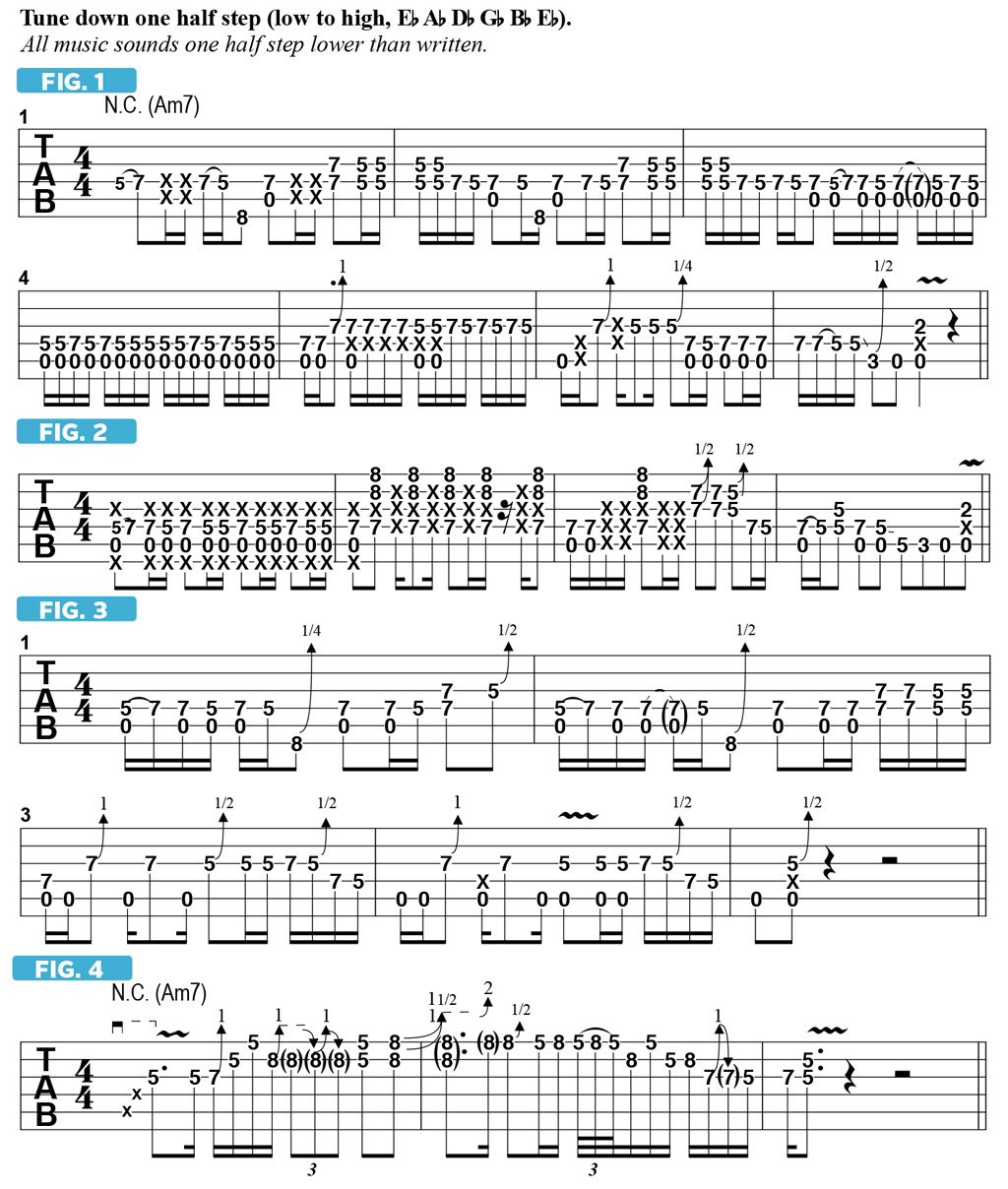Get Experienced: Studying the Playing of the Great Jimi Hendrix
In his latest lesson, Judas Priest's Richie Faulkner analyzes the guitar work of the great Jimi Hendrix.
An essential element in the learning process for every guitarist is to analyze how our favorite guitar players do what they do and figure out how to emulate those sounds ourselves. This can’t happen at a gig, while you’re doing your thing and playing to the best of your ability in the moment. It has to be a separate endeavor, to sit down, listen hard and aspire to work out what our heroes are doing by putting their playing under the microscope, or stethoscope, so to speak. Once you begin to scrutinize every element, it becomes even more fascinating — the way someone might change their picking approach for different phrases, switching between different pickups, string-bending techniques and whatnot. This type of study provided a great education for me in my own development as a guitarist.
For example, what was it about Jimi Hendrix’s playing that made me wonder, back when I was a teenager, “What was that?!” I still don’t know today! It was just a sound that I was attracted to and couldn’t get enough of. As I studied Hendrix more and more, I continually came across little things, technical and stylistic elements, that I had never thought about before.
One of the things I remember vividly about listening to Jimi is discovering his 1967 Monterey Pop Festival performance, particularly the way he began the show with his unaccompanied tour-de-force on “Killing Floor.” He was wearing a pink feather boa, embroidered vest, yellow shirt, headband, and his sound with his Stratocaster was just incredible. The whole spectacle of the man — I get chills thinking about it even now! Sonically, visually — the whole thing. Even when you break it down, the magic is still there.
FIGURE 1 is a guitar riff played in a manner similar to Jimi’s “Killing Floor” intro. It’s based on the A minor pentatonic scale (A C D E G) played in fifth position and is performed with constant 16th-note strumming across virtually all six strings. The riff centers mostly around alternating between the notes G and A on the D string’s fifth and seventh frets. I use my fret hand to mute the other strings in such a way that only the specific notes of my choosing are sounded, while the other strings, when strummed, sound as “dead-string” accents.

The feel here is intentionally very loose and is pure electric blues. It goes straight to your heart and soul. The pick hand has to aggressively sweep across the strings, as shown in FIGURE 2. In bars 2 and 3, I employ a chord shape and voicing for A7#9(no3) that Jimi often used in various keys and positions to great effect on songs like “Foxey Lady” and “Stone Free.” I’m barring my pinkie across the top two strings at the eighth fret. To break this technique down, FIGURE 3 offers a slightly simplified version, played at about half speed. When you play through it at this tempo, it’s easy to identify all of the interesting rhythmic syncopations woven throughout the phrases.
The same approach should be applied to the lead break. FIGURE 4 offers a Hendrix-like solo example, complete with heavy, wide vibratos, expressive bends and over-bends, and a overall feeling of unpredictability, which is at the heart of all great blues guitar soloing.
Richie Faulkner has been a member of legendary U.K. heavy metal band Judas Priest since 2011. Their 2018 album, Firepower, became the band's highest-charting album ever in the U.S.
Get The Pick Newsletter
All the latest guitar news, interviews, lessons, reviews, deals and more, direct to your inbox!
“There are so many sounds to be discovered when you get away from using a pick”: Jared James Nichols shows you how to add “snap, crackle and pop” to your playing with banjo rolls and string snaps
Don't let chord inversions bamboozle you. It's simply the case of shuffling the notes around







![Joe Bonamassa [left] wears a deep blue suit and polka-dotted shirt and plays his green refin Strat; the late Irish blues legend Rory Gallagher [right] screams and inflicts some punishment on his heavily worn number one Stratocaster.](https://cdn.mos.cms.futurecdn.net/cw28h7UBcTVfTLs7p7eiLe.jpg)


